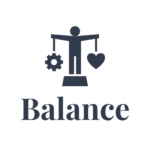Last Updated on March 15, 2024 by Treana Wunsch
Now that you know how to Implement an Effective Employee Onboarding Process, we can move on to improving how to manage employee performance for your small business.
As a small business owner, knowing how to manage employee performance effectively can be challenging but it is a key factor in creating a successful and productive work environment.
If you are looking for tips on how to manage employee performance within your small business, then this article is for you. Here, I will discuss strategies to help you get the most out of your employees, including setting clear expectations, providing feedback and recognizing achievements.
I will also provide guidance on how to handle difficult conversations with employees.
Why is it Important to Manage Employee Performance?
"An employee's motivation is a direct result of the sum of interactions with his or her manager."
Bob Nelson Tweet
Performance management is a crucial aspect of any organization, as it ensures that employees contribute to the company’s overall success. To manage employee performance effectively, employers should establish clear expectations and goals for each employee. This can be done through regular communication and feedback sessions between managers and their team members.
In addition to setting expectations, employers should also provide adequate training and development opportunities to help employees improve their skills and grow within the organization. Regular performance evaluations should also be conducted to assess progress toward goals, identify areas for improvement, and recognize successes.
Finally, it is important for employers to provide constructive feedback throughout the year rather than only during formal evaluations. This can help employees stay on track toward meeting their goals while also fostering open communication between managers and their teams. Overall, effective performance management can lead to increased productivity, higher job satisfaction among employees, and ultimately improved business outcomes.
Defining Employee Goals & Expectations
In order to effectively manage employee performance, it is crucial to define clear goals and expectations from the outset. This means setting specific, measurable targets for each employee that align with broader business objectives. Goals should be challenging but achievable, and employees should be given the necessary resources and support to meet them.
Expectations should also be clearly defined in terms of behaviour and attitude. Employees should understand what’s expected of them in terms of punctuality, attendance, professionalism, communication, and teamwork. These expectations can form part of a wider set of company values or guiding principles that act as a reference point for all employees.
By defining goals and expectations at the start of an employment relationship or performance management process, employers can establish a clear framework for success that motivates employees to perform at their best while providing a baseline against which progress can be measured.
Monitoring Employee Progress & Setting Targets

Monitoring progress and setting targets are essential components manage employee performance effectively. By tracking progress, managers can identify areas where their employees are excelling or struggling and provide the necessary support to improve their performance. Setting clear targets helps employees understand what is expected of them and provides a benchmark for measuring their success.
To monitor progress effectively, managers should establish regular check-ins with their employees to review objectives, discuss any challenges they may be facing, and provide feedback on their performance. This approach allows managers to identify problems early on and take corrective action before issues become too difficult to address.
Setting targets involves defining specific goals that employees must achieve within a certain timeframe. Goals should be challenging but achievable and aligned with overall business objectives. By setting clear expectations, employees are more likely to feel motivated and engaged in achieving their targets. Managers should regularly review progress towards these goals with their team members so that everyone is aware of how things are progressing.
In summary, monitoring progress and setting targets are critical aspects of managing employee performance effectively. By establishing regular check-ins with teams and clearly defining expectations through target-setting exercises, employers can keep track of individual performances while also ensuring that each member is working towards shared business objectives.
Providing Employee Feedback & Recognition
"If you don't create a great, rewarding place for people to work, they won't do great work."
Ari Weinzweig Tweet
One of the key components of managing employee performance is providing regular feedback and recognition. Feedback can help employees understand how they are performing and where they need to improve, while recognition can motivate them to continue doing well. It’s important for managers to provide both positive and constructive feedback, as well as timely recognition.
When giving feedback, it’s essential to be specific about what the employee did well or needs improvement on. Vague comments like “good job” or “needs improvement” don’t give the employee enough information to understand what specifically they should replicate or change in their behaviour. Additionally, it’s important for managers to listen actively when employees give their own perspectives on their performance.
Recognition can come in many forms, from a simple thank-you note to bonuses or promotions. The key is for it to feel meaningful and personalized so that the employee feels truly appreciated. Managers should also make sure that recognition is consistent across teams so that no one feels left out or unfairly treated. By providing regular feedback and recognition, managers can help create a culture of growth and motivation among their team members.
Identifying Employee Improvement Opportunities

Every organization needs to identify improvement opportunities to enhance employee performance. One of the ways to identify improvement opportunities is through regular feedback and review sessions with employees. During these sessions, managers can assess an employee’s current performance against set goals and objectives while highlighting areas that require improvement.
Another way is by conducting a skills gap analysis, which will help identify areas where employees lack skills or knowledge necessary for their roles. Once identified, training programs or upskilling initiatives can be put in place to close the gap.
Finally, observing employees at work can also help in identifying potential improvements. For example, noticing repetitive tasks that could be automated or identifying inefficiencies in processes that could be streamlined. By addressing such issues through process improvements, organizations can improve employee productivity while increasing overall organizational efficiency.
Resolving Employee Challenges & Difficulties
When it comes to managing employee performance, there are bound to be challenges and difficulties that arise. One common challenge is dealing with underperforming employees. In these cases, it’s important to address the issue head-on and provide clear feedback on what needs improvement. This can include setting specific goals and expectations for the employee, providing training or resources for improvement, and regularly checking in on progress.
Another difficulty that may arise is managing conflicts between employees or between an employee and their supervisor. In these situations, it’s important to remain neutral and objective while listening to both sides of the story. Once you have a clear understanding of the situation, work with those involved to find a resolution that works for everyone. This may involve mediation or coaching on effective communication skills.
Finally, navigating changes in company policies or procedures can also present challenges when managing employee performance. It’s important to communicate any changes clearly and provide support for employees as they adapt to new ways of working. Additionally, stay open to feedback from employees during this transition period so that you can quickly identify any areas where additional support may be needed.
Effective Employee Performance Management
"Talent wins games, but teamwork and intelligence win championships."
Michael Jordan Tweet
In conclusion, effective performance management is essential for any organization to achieve its objectives. A well-designed performance management system will help managers identify employee strengths and weaknesses while providing them with the tools they need to succeed. This can be achieved through regular feedback sessions that provide employees with actionable insights into their performance.
Moreover, effective performance management helps organizations foster a culture of continuous learning and development. By setting clear expectations and goals, employees are encouraged to improve their skills and knowledge continually. As a result, they become more engaged in their work and are more likely to remain with the company long-term.
Ultimately, an effective performance management system provides businesses with a competitive edge by enabling them to attract top talent, retain valuable employees, foster growth and accountability, and ultimately achieve success.
That's All Folks...
I hope this article helps you improve how you manage employee performance. This will in turn, improve your small business successes. Your employees are the most valuable small business resource.
What was the most important takeaway from this article?
Did I miss any important information on how to manage employee performance?
Let me know if you have any questions about this or anything small business related!
If you found this article about how to manage employee performance helpful, please share and comment below!











